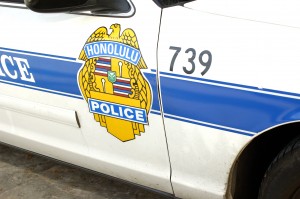
Police vehicles like this one can have their life extended with nitrogen tire inflation. Photo by Jaymast.
Law enforcement agencies all across the country have committed to nitrogen tire inflation programs in order to increase safety and to cut costs in fleet maintenance. One of the first police departments in the United States to embrace nitrogen tire inflation is the Garner Police Department in North Carolina.
“There’s approximately a 10 percent savings on gas mileage, and when you’re talking about 60 cars in a fleet, you’re talking about quite a bit of money of time,” said Garner Police Sgt. Joe Binns on WRAL. “Anytime when we can save money on taxpayers, it’s worthwhile.”
Although other studies have found that the percent savings on gas mileage is closer to three or four percent, those savings do add up when it comes to a large fleet of law enforcement vehicles, especially in these tough economic times. Whether those savings are seen in the fuel efficiency, in an extended tire life (a tire that’s 20 percent under-inflated will have a 15 percent shorter life), or in reduced maintenance costs, nitrogen tire inflation is an easy way for law enforcement agencies to save money when budgets are only getting tighter.
But the smallest things can make a big difference, as is seen by the The Kingsport (Tennessee) Police Department. Kingsport started using nitrogen in their vehicle tires a few years ago, and noticed a difference in performance within six months. “Since I’ve had the nitrogen in my tires, I’ve never had to touch the tires,” Kingsport Officer Tom Wayt said on PoliceOne.com. The city is citing preliminary data showing not only better gas mileage but better wear on the tires.
Sergeant John Zoller of Broken Arrow, Okla. agreed to the long term benefits of utilizing nitrogen tire inflation in law enforcements fleets. This is especially important for law enforcement fleets since these vehicles acquire put on a lot of miles in one year.
“We really should look at nitrogen for our fleet of vehicles and specifically within law enforcement. The increase savings in gas mileage and tire wear would certain prove its worth in time,” Zoller said.
If a typical tire costs $100 and a department sees a 10-percent increase in tire life by using nitrogen tire inflation, then that’s a savings of $10 per tire or $40 per car. If tires are replaced about every 10 months, a 10-percent increase in life extends the tire life to just under one year. So every year, each car saves approximately $40. If there are 100 vehicles in a department’s fleet, then a switch to nitrogen tire inflation can save $4,000 per year.
However, only 10 percent of tire dealers nationwide offer nitrogen tire inflation services. If you’re considering nitrogen tire inflation for you or your fleet, and have trouble finding nitrogen service, then consider Nitrofleet99.





